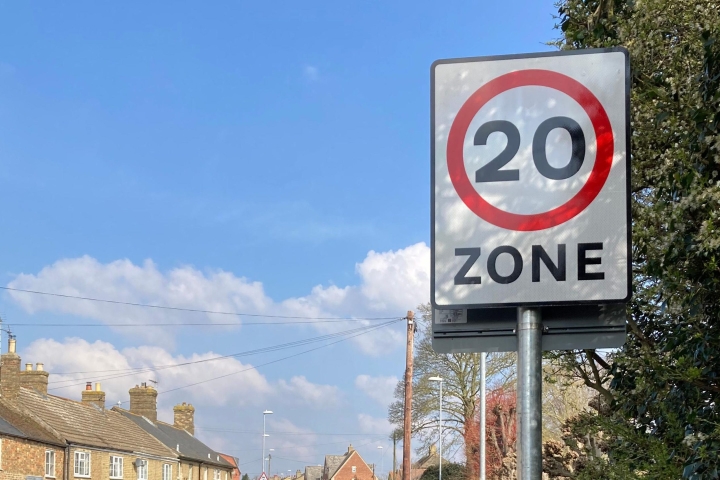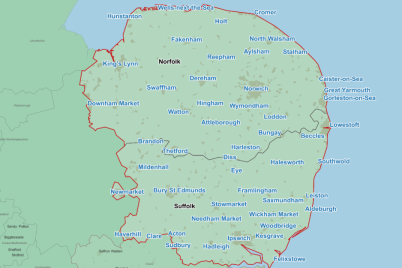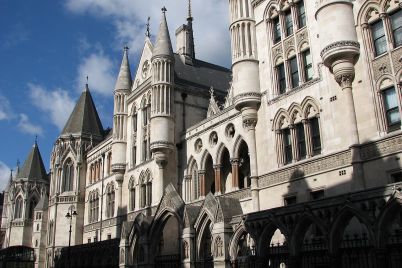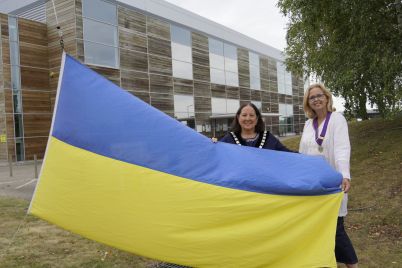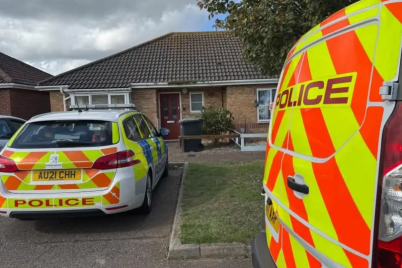Cambridgeshire County Council has approved a series of new 20mph schemes aimed at improving road safety, reducing collisions and supporting healthier, more active travel across the county. The decision was taken at the Council’s Highways and Transport Committee meeting on Tuesday, 14 October, following a process that invited local community groups, Parish and Town Councils to submit applications for funding.
The council has allocated £160,000 for 2025-26 to fully fund the approved schemes. Prior to the committee meeting, officers scored all applications, which were then reviewed by a cross-party councillor working group. The schemes will either take the form of a 20mph limit or a 20mph zone, depending on the location. A 20mph limit typically covers a small number of streets and requires only signage, whereas 20mph zones cover larger areas and involve both signs and road markings.
Of the 95 applications submitted across Cambridgeshire, 11 were approved. The schemes include village-wide 20mph zones in Barrington, Comberton, Landbeach, Harston, Madingley, Milton and Newton in South Cambridgeshire, and Offord Cluny and Offord Darcy in Huntingdonshire. In addition, multiple-road schemes were approved in Waresley, Wilburton, and Sutton. Following the committee’s approval, each scheme will undergo informal and statutory consultation with the community before final implementation. Those not funded will remain on the priority list for future rounds, with the next applications reopening in January 2026. On-site delivery is expected to begin in late summer 2026 and continue through spring 2027.
Cllr Alex Beckett, Chair of the Highways and Transport Committee, said the programme reflects the council’s commitment to safer streets. He noted that even small reductions in vehicle speed can have a significant impact on safety. A vehicle travelling at 20mph has a 90% chance of survival for a pedestrian in a collision, compared with 50% at 30mph, and studies show casualty reductions of over 20% in areas with 20mph limits. “Our funding empowers local communities to make their streets safer, while encouraging healthier, more active travel,” Cllr Beckett said.
Evidence from the UK and Europe demonstrates the benefits of lower speed limits. Research conducted by Transport for London (TfL) analysed more than 150 20mph schemes implemented between 1989 and 2013, showing a 34% reduction in deaths and serious injuries and a 75% reduction in child fatalities on borough roads. The analysis confirms that 20mph limits do not increase congestion and contribute to safer streets, supporting walking, cycling, and reduced noise pollution.
The positive impact of 20mph schemes has also been confirmed in Wales, where a national default 20mph speed limit on restricted roads reduced casualties by 24% in the period from April to June 2024 compared to the previous year. Evidence consistently highlights that speed is the single most important factor in the likelihood and severity of collisions, with faster vehicles associated with higher risks of serious injury and death. In London, speed was a contributory factor in around half of fatal collisions in 2023.
While compliance with the speed limit is crucial, councils can encourage adherence through road signs, markings, education campaigns, public engagement and, where necessary, enforcement. Observational studies across the UK show that 20mph schemes are linked to safer roads without significantly impacting travel times or local traffic flow. The schemes also have wider benefits, including encouraging walking and cycling, improving air quality and reducing traffic noise, which can positively influence physical and mental wellbeing across communities.
The Cambridgeshire 20mph programme aligns with wider national objectives to reduce road casualties and improve public health. By reducing speed and encouraging walking and cycling, these schemes aim to make streets safer, promote sustainable travel, and support communities in creating safer, more inclusive neighbourhoods.
The council’s full list of approved 20mph schemes and supporting documents are available on the Cambridgeshire County Council website, providing residents with details of locations, planned consultations and next steps. This initiative represents a tangible step towards safer, healthier and more connected communities across the county, while reflecting the council’s commitment to evidence-led measures that protect the most vulnerable road users.

